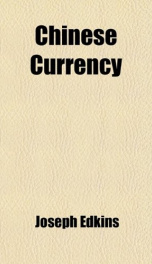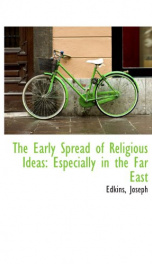chinese currency

Purchase of this book includes free trial access to www.million-books.com where you can read more than a million books for free. This is an OCR edition with typos. Excerpt from book: The introduction of silver was the effect of foreign trade. The government at first opposed it because it caused a decline in the circulating value of paper notes, but trade proved too strong for the government successful Iy to resist the use of silver. In the year A.D. 1376 there was an edict directing that in payment of taxes oue tuel silver should count as 1,000 cash iu copper and as ten strings textit{(hwan) in copper cash notes. Either of these three modes of payment would be accepted by the tax collector as an equivalent for one picul, which was then as now 100 catties, or Chinese pounds, of rice. For wheat the amount was less by one-fifth. Oue piece of cotton or grass cloth was valued at ths of a picul of rice and T7oths of a picul of wheat. Coarse hemp cloth was rated at TVns of a picul of rice and half a picul of wheat. In a large part of China millet is the food of the people, and in those parts they could pay taxes in millet. Eight years later it was ordered that in Yuauan, gold, silver, cowrie shells, varnish, cinnabar, and quicksilver should each be allowed to form part of the autumn tax payment. The tribute of rice was the regular tribute, ;£ -g, textit{pSn-se, and all substitutes for it, whether precious metal or any articles of value were substitutionary tribute, textit{ffi Q cM s$h. The textit{ting U, of the value of five taels, in the form of paper notes, corresponds to the fifty-tael notes of the Yuen dynasty. The early Ming emperors retained the system of government notes as currency. They were one-tenth of their former value. In Kublai's time paper notes, known as textit{ting, were of the nominal value of fifty taels of silver. They counted as five taels in the time of the first Ming emperor. In A.D. 1397f the Board of Revenue proposed that one picul of ...
Info about the book
Author:
Series:
Unknown
ASIN:
B008HL8B32
Rating:
3.5/5 (1)Your rating:
0/5
Languge:
English
Users who have this book
Users who want this book
What readers are saying
What do you think? Write your own comment on this book!
write a commentGenre
if you like chinese currency try:
Other books by this author
Do you want to exchange books? It’s EASY!
Get registered and find other users who want to give their favourite books to good hands!





